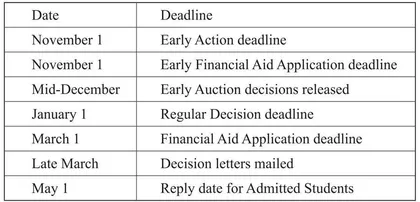Classified Training Ⅰ分类训练一

阅读理解 + 阅读七选五
(一)
阅读理解
A
With hundreds of beaches to choose from the Andaman and Nicobar Islands, it can be hard to decide on a summer destination. Here are the best places to visit in Andaman and Nicobar Islands.
Ross and Smith Beach
Offering a long stretch of greenish blue-tinted waters, soft white sand, and plenty of trees for shade, Andaman and Nicobar Islands’ most impressive beach is worth a visit. With shallow waters, Ross and Smith Beach offers many underwater activities, among which spotting fishes is very common.
Radhanagar Beach
Far-famed for its white sands and clear water, Radhanagar Beach was chosen to be the best beach in Asia by Time magazine in 2004, thus, attracting millions of tourists and travelers from all across the world, all year round. If you are someone who loves fun water activities, you must visit this beach.
Havelock Beach
If you love underwater activities like scuba diving, you ought to visit this place. There are spots for licensed divers to enjoy and there are numerous places where training for amateur divers is provided. This place has a rich coral forest and the most incredible underwater life. If you love underwater snap shooting, this place is a paradise for you.
Merk Bay Beach
The surf is appealing, the sand is soft, and the sunsets are striking. Merk Bay Beach is filled with fun, so it’s not for retiring types. If you are a thrill-seeker, this is the best beach to be on. Due to the clear waters, you can easily spot tropic and colorful fishes while swimming. Many vacationists camp overnight by the beach for fun.
1. Which beach was ever considered the best in Asia by a magazine?
A. Ross and Smith Beach. B. Radhanagar Beach.
C. Havelock Beach. D. Merk Bay Beach.
2. What can Havelock Beach offer to travelers?
A. Diving training. B. Diving licenses. C. Forest camping. D. Bird spotting.
3. What are travelers advised to do on Merk Bay Beach?
A. Catch fishes. B. Camp underwater. C. Watch sunsets. D. Create sand sculpture.
B
On my granddaughter Mary’s 21st birthday, I sat with her and her expired (过期的) driver’s license on a hard wooden bench at the DMV (the Department of Motor Vehicles), waiting for our number to be called. The broadcast system announced numbers to call ticket holders to reach the desk to take an eye test or renew a registration. I felt as though we were staying at a bingo game, waiting for the winning number to be called so we could jump up and collect the prize.
And on that bench, I had a thought: The seemingly ordinary events I’ve shared with my granddaughter were both my adventures and my rewards for just showing up. I grew up in an immigrant family in the suburb of Boston. A vacation for us was a bus trip to Central Square, with shopping bags filled with delicious foods followed by the muddy sand sucking our toes.
I looked forward to these small outings. It sounded boring to seek out the simple pleasures, but it was not. I traveled to remote islands, to Europe, and to many of America’s cities. Those trips were refreshing, but they were breaks. I prefer the mainstream of the ordinary.
I like the day trips. But the most wonderful time was when Mary and I stayed in the reading room. We talked about her homework, and played the roles of two thinkers discussing the Enlightenment (启蒙运动). We had our private book club, reading A Prayer for Owen Meany and copying the voice of the main character.
All of these ordinary moments are more valuable than the time it will take to travel around the world. Many people love adventures, like skydiving or climbing Mount Qomolangma. But that is not who I am. I don’t need those adventure experiences. In the end, it turns out that just showing up is enough for me.
4. What was the author doing at the DMV according to Paragraph 1?
A. Staying with Mary to renew a license. B. Preparing to take a driving exam.
C. Playing a bingo game with Mary. D. Celebrating Mary’s 21st birthday.
5. Why does the author mention her childhood?
A. To show her identity as an immigrant. B. To show her simple pleasures as a kid.
C. To express her enthusiasm for traveling. D. To make a comparison with her life afterward.
6. What can we infer about the author from Paragraph 4?
A. She was fond of reading by herself. B. She served as the best teacher for Mary.
C. She had a good relationship with Mary. D. She was a great thinker.
7. What can be the best title for the text?
A. The Unforgettable Experience at DMV B. My Pleasant Childhood Memories
C. My Life with My Granddaughter D. Happiness from Ordinary Events
C
A project in Kenya is using biogas technology to attack two major pollution problems with one device: a machine that changes waste such as invasive water hyacinth (水葫芦) into cleaner cooking fuel.
The project from Biogas International, a Kenyan energy technology company, has so far provided 50 of the Flexi Biogas devices to homes in the city of Kisumu in western Kenya. The main device is called a digester (蒸煮器) because it breaks down plant waste to produce gas. The digesters will permit families to stop using wood or coal, both of which produce dangerous smoke. Tony Otieno used the gas from a digester to cook. He said, “The gas has no smoke, does not smell, and it is much faster than the jiko, a stove (炉子) that uses wood coal.”